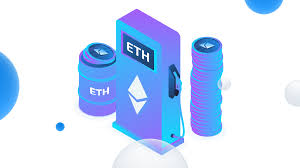
Ethereum gas is a unit of measurement that measures the amount of computational effort required to execute certain operations on the Ethereum network. In other words, it’s a way for developers and users to pay for their actions on the blockchain.
Gas is needed in order to perform any action on Ethereum because each transaction costs some amount of money (in its own currency) in order to be processed by miners and added into blocks on the blockchain. This ensures that no one can spam transactions or overload systems with too many requests at once without paying up first!
GAS FEES
Gas fees are the price of using the Ethereum network. They’re calculated by multiplying the current gas price with the amount of gas you’re using, and then adding a small fee for miners (to incentivize them).
Gas is used for every transaction on Ethereum, whether it’s sending ether or executing a smart contract function. The more complex your transaction is, for example, if it includes multiple operations in one step–the more gas you’ll need to spend.
The current average cost per unit of gas is about $0.0006 USD (at time of writing), but this can fluctuate depending on how busy or congested the network is at any given moment; if there are fewer transactions happening overall than usual because everyone’s waiting for prices to go down before buying into an ICO again after their last failed attempt didn’t work out so well due…(insert reason here), then there will be less competition among miners vying for rewards from validating these transactions which means fewer fees paid out per block mined; conversely if everyone decides they want their money back after losing everything during those ICOs mentioned above then demand will increase while supply remains constant resulting in higher prices due to increased competition among miners trying desperately not just because they love us but also because otherwise we won’t give them any money anymore either way so better make sure nothing goes wrong.
Leave a Reply